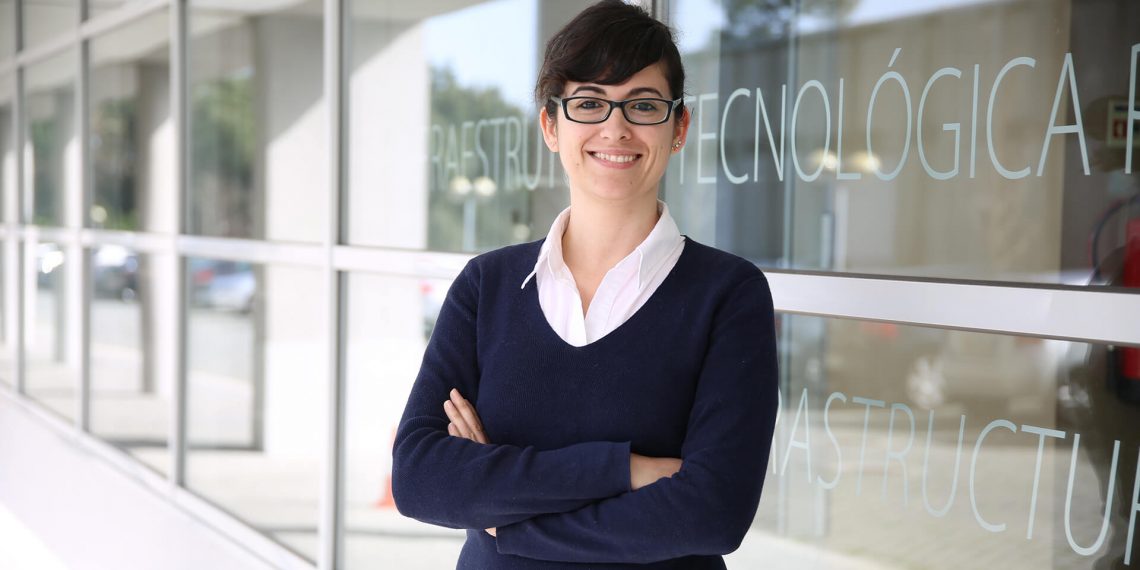Researcher Diana Guimarães will have a year and a half to apply an approach with “great potential to reveal the manufacturing processes and composition of objects of high historical value”. Meanwhile, the work carried out by PhD student Diana Capela on the analysis of Portuguese tiles received an award.
A disruptive proposal for research and interpretation of cultural heritage has earned INESC TEC researcher Diana Guimarães €50K in funding, within the scope of the second edition of the RESTART programme, promoted by the Foundation for Science and Technology (FCT).
The researcher’s approach involves associating heritage objects with interactive three-dimensional images that show their atomic and molecular “spectral fingerprint”; this way, it becomes possible to obtain valuable information about the composition of said objects.
The project is called SPECTRA-3D: Spectral Imaging and Augmented Reality for Disruptive Cultural Heritage Interpretation, and it represents another INESC TEC contribution to the rehabilitation, restoration, preservation, and dissemination of cultural heritage.
Diana Guimarães will integrate advanced spectral imaging technologies – LIBS (Laser-Induced Breakdown Spectroscopy), Raman Spectroscopy (RS), Hyperspectral Imaging (HSI), and X-Ray Fluorescence (XRF) – with 3D scanning techniques and augmented reality systems.
“By incorporating these spectral imaging techniques into 3D models, the project aims to create interactive digital replicas that go beyond the limits of visual observation. Applied to research and conservation, this innovative concept offers great potential to reveal the manufacturing processes and origin of objects, while also serving as an engaging educational tool accessible to the general, non-expert audience,” explained the researcher.
The RESTART programme, promoted by the FCT, is designed to support researchers who have recently taken parental leave, including adoption leave; it aims to promote gender equality and equal opportunities in scientific research activities and careers, through the competitive funding of individual R&D projects in all scientific fields.
What does a tile hide?
SPECTRA-3D is not the only recent INESC TEC contribution to this research area led by Diana Guimarães. PhD student Diana Capela was recently awarded the PhD Best Poster Award at the ESP Young Minds U. Porto Poster Contest 2025.
Diana Capela developed a study that presents an innovative approach to the analysis of heritage tiles, using the LIBS technique with a fibre laser system.
The paper Fiber Laser LIBS as a Sensing Tool for Chemical Mapping of Heritage Tiles claims that this technique could make it possible to “carry out chemical analyses with higher spatial resolution, increasing time efficiency and reducing the impact on the delicate surfaces of historical artefacts”.
Diana Capela is carrying out her PhD research at INESC TEC, under the supervision of Diana Guimarães. The award was presented during the ESP Young Minds U. Porto Poster Contest, held between May 19 and 23, at the Faculty of Sciences of the University of Porto (FCUP) – with the support of the European Physical Society (EPS).
The event brought together undergraduate, master’s and PhD students from the Department of Physics and Astronomy (DFA), who presented their research work in Physics, Astrophysics, and Engineering. The initiative is the result of collaboration between the PhysikUP group and the SPIE Student Chapter at the University of Porto.
The EPS Young Minds programme is an initiative of the European Physical Society, created in 2010 to support students and young researchers in Physics and related areas, promoting professional development, scientific outreach, and the creation of collaboration networks among younger scientists.



 News, current topics, curiosities and so much more about INESC TEC and its community!
News, current topics, curiosities and so much more about INESC TEC and its community!